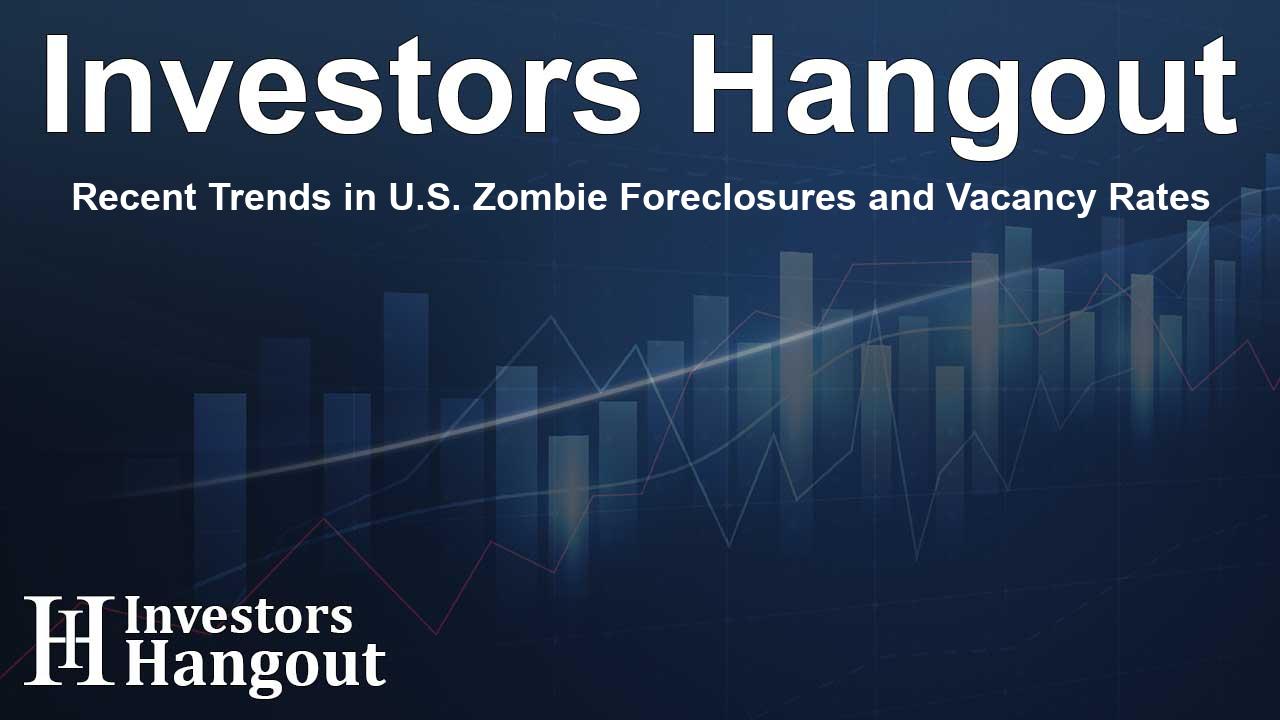Recent Trends in U.S. Zombie Foreclosures and Vacancy Rates

U.S. Vacancy Rates Hold Steady
The national home vacancy rate has been remarkably stable at 1.3 percent for 14 consecutive quarters. A recent report indicates a slight increase in the number of "zombie" foreclosure properties, rising to 3.38 percent. This metric reflects an ongoing trend in the real estate market as it continues to recover from previous downturns.
Understanding Zombie Foreclosures
Zombie foreclosures refer to homes that are in the process of foreclosure but are abandoned by their owners. According to the latest data, there are approximately 222,318 properties undergoing foreclosure across the country. Among these, around 3.38 percent, or 7,519 homes, are classified as zombies. This number is mildly higher than the prior quarter's 3.30 percent, indicating a slow upward trend.
Impact on Local Markets
Experts warn that vacant and zombie homes can negatively affect the property values of surrounding homes, potentially leading to a downward spiral in local housing markets. It's a situation that community leaders and real estate professionals monitor closely, emphasizing the importance of addressing this issue.
The State of the Market
While increases in zombie properties have been noted in various states, many states are also experiencing either stagnation or improvements in their overall foreclosure and vacancy rates. Some markets still showcase concern about high vacancy rates, but the overall picture indicates buyers are increasingly filling homes that become available.
State Data Highlights
Throughout the third quarter of 2025, the number of zombie properties rose in 23 states, though often by only single-digit increases. For states with significant reductions in zombie properties compared to previous quarters, changes were also modest. In fact, four states maintained their zombie property counts.
Year-Over-Year Trends
Focusing on states with at least 50 zombie properties, those experiencing the largest year-over-year increases in zombie foreclosure rates include Colorado (up 115%), Washington (up 114%), and North Carolina (up 80%). Conversely, states like Georgia and New Jersey noted significant decreases in their zombie rates.
Vacancy Rates by Region
The states showcasing the highest vacant property rates include Oklahoma and Kansas, while regions such as New Hampshire and Vermont are reported to have some of the lowest rates. The Northeast, in particular, continues to exhibit the most consistent vacancy rates.
Metro Area Insights
Analyzing larger metropolitan areas reveals an interesting trend; 57 percent have zombie foreclosure rates below the national average. Notably, areas like Nashville and Atlantic City have almost negligible zombie property issues.
Investor Impact and Property Trends
Approximately 24.9 million investor-owned properties exist nationally, with about 3.6 percent classified as vacant. Investor-driven markets often exhibit different dynamics, with states like Indiana and Illinois showcasing higher vacancy rates among investor-owned homes.
Evaluating Local Performance
Almost two-thirds of larger ZIP codes demonstrate zombie foreclosure rates below the national average. Specific ZIP codes in Los Angeles and Peoria, however, significantly exceed average rates, highlighting uneven distributions of these properties across the country.
Final Thoughts on U.S. Property Trends
The trends observed in vacancy and zombie foreclosure rates provide essential insights into the current state of the U.S. housing market. While certain areas face challenges with these issues, overall stability in vacancy rates indicates a resilient housing sector. As market dynamics continue to evolve, attention to vacant and abandoned properties remains crucial for maintaining healthy local economies.
Frequently Asked Questions
What is a zombie foreclosure?
A zombie foreclosure occurs when a property is abandoned by the owner while still in the foreclosure process, often leading to vacancy and property degradation.
How does the national vacancy rate affect property values?
A high vacancy rate can negatively impact property values in nearby areas as abandoned homes tend to lower overall neighborhood attractiveness and desirability.
Which states have seen the largest increases in zombie properties?
States like Colorado, Washington, and North Carolina have noted significant increases in the rate of zombie properties year over year.
How can communities address the issue of zombie foreclosures?
Communities can take measures such as increasing outreach to owners in pre-foreclosure, providing resources for rehabilitation, and monitoring vacant properties to maintain neighborhood stability.
What role do investors play in the housing market?
Investors can significantly influence housing dynamics through purchasing properties but often lead to varied vacancy rates based on their management of those properties.
About The Author
Contact Riley Hayes privately here. Or send an email with ATTN: Riley Hayes as the subject to contact@investorshangout.com.
About Investors Hangout
Investors Hangout is a leading online stock forum for financial discussion and learning, offering a wide range of free tools and resources. It draws in traders of all levels, who exchange market knowledge, investigate trading tactics, and keep an eye on industry developments in real time. Featuring financial articles, stock message boards, quotes, charts, company profiles, and live news updates. Through cooperative learning and a wealth of informational resources, it helps users from novices creating their first portfolios to experts honing their techniques. Join Investors Hangout today: https://investorshangout.com/
The content of this article is based on factual, publicly available information and does not represent legal, financial, or investment advice. Investors Hangout does not offer financial advice, and the author is not a licensed financial advisor. Consult a qualified advisor before making any financial or investment decisions based on this article. This article should not be considered advice to purchase, sell, or hold any securities or other investments. If any of the material provided here is inaccurate, please contact us for corrections.
